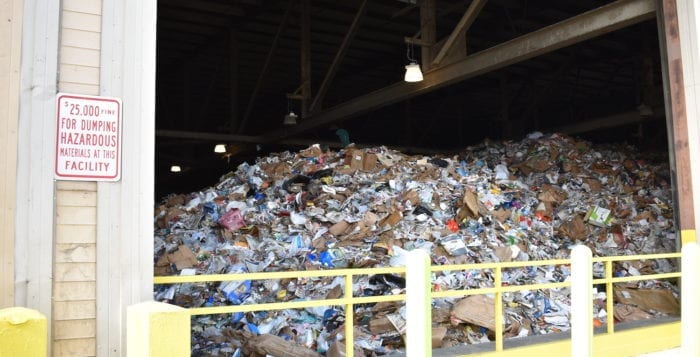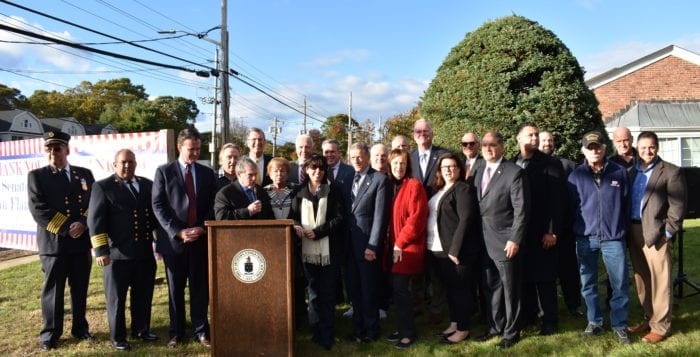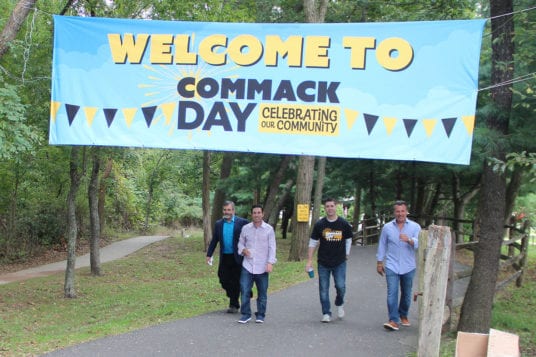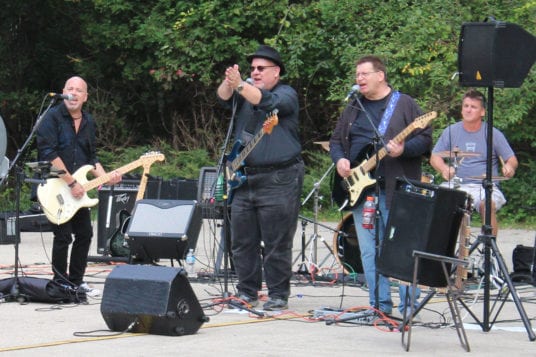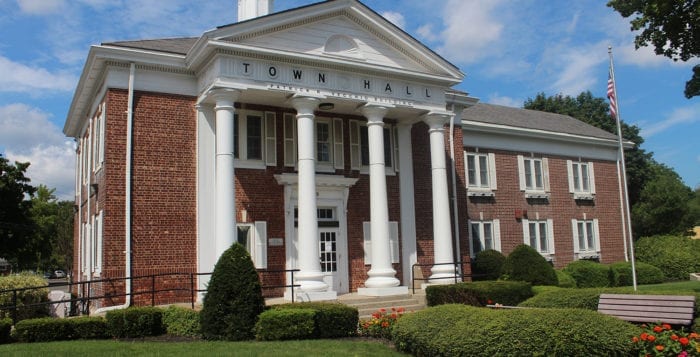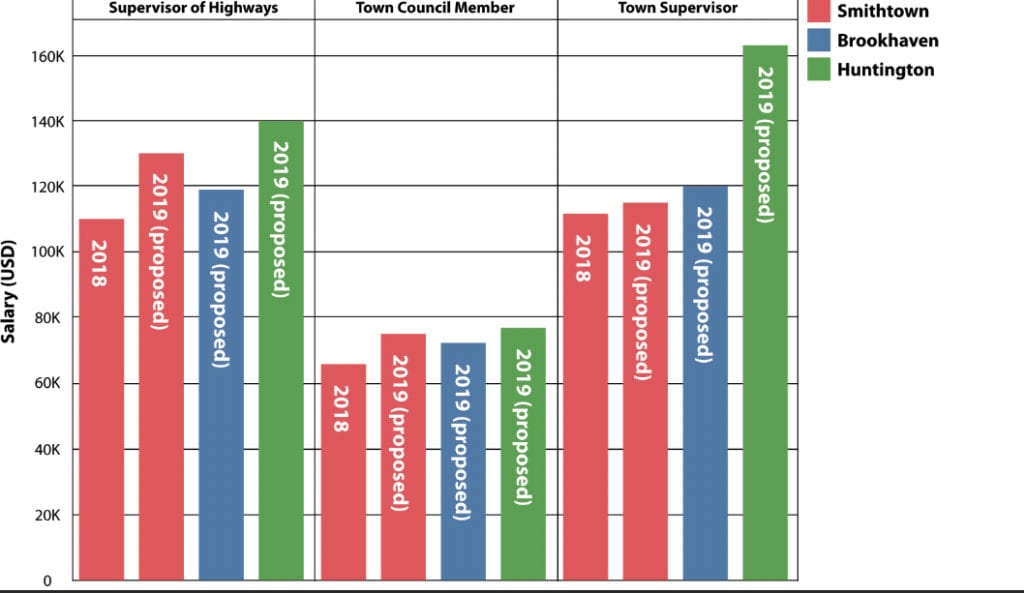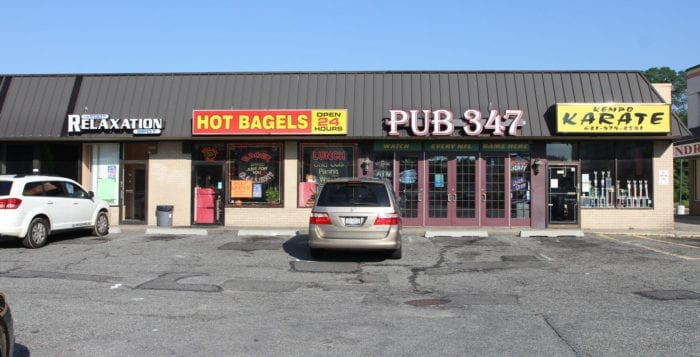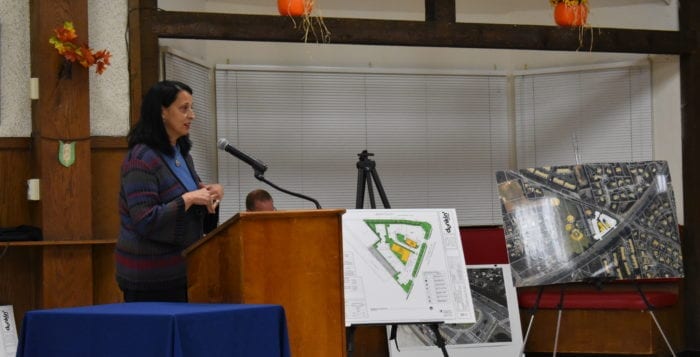With bids in for the Town of Smithtown recycling contract, town officials have a big decision to make that may change how and when residents take their bins to the curb.
“Perhaps there’s a market for it — perhaps these bidders have a place where they can bring it,” Supervisor Ed Wehrheim (R) said prior to the opening of the bids.
The Town of Smithtown has been left without a recycling-service provider since Oct. 29 when Green Stream Recycling, the Town of Brookhaven’s recycling contractor, voided its contract with the town. Smithtown, among other local municipalities, had an agreement with Brookhaven to sell all its recyclables through Green Stream for a profit. Now, Smithtown has been left without a recycling contract and has been dumping all its recyclables at the Municipal Services Facility located on Old Northport Road in Kings Park. The facility has approximately two-to-three weeks before it is full to capacity.
“You’re going to be hard pressed after years of single stream to go back to dual stream…”
— Ed Wehrheim
The town unsealed four bids for its recyclable materials Nov. 8. Two bids, received from West Babylon-based Winters Bros. Hauling of Long Island and Islandia-based Trinity Transportation, offered both single-stream recycling and dual-stream recycling. Single-stream recycling is the process of taking all recyclables in a single can and everything would be sorted at a facility. Dual stream requires residents to sort out different types of recyclables, including different kinds of plastics, metals and papers, and putting out each kind of material on different days of the week for collection.
Smithtown officials estimate the town picks up 11,500 tons of recyclables each year. If the town wants to stick with a single-stream recycling process, it may cost close to $1 million to send these materials off for processing. This would be a major difference compared to the small $180,000 in profit it made in annual revenue selling its recyclables to Brookhaven.
Bids received for dual-stream recycling, including both Winter Bros. and Trinity Transportation, propose rates the companies would be willing to pay for each specific product. For example, Trinity would pay the town $68 a ton for its newspaper and cardboard.
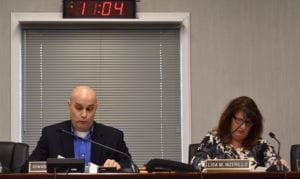
The town calculated it would collect approximately 6,500 tons of paper and 1,900 tons of metal, plastic and glass combined from residents if households were required to sort their own recycling.
Russell Barnett, the town’s recycling coordinator, said one of the options Smithtown is considering is taking glass off the list of curbside materials and setting up a specialized locations where residents can drop off their glass products.
Recycled glass is a major bane for Patricia DiMatteo, owner of Trinity Transportation. She said that recyclable products can easily become contaminated, especially with glass, when collected in a single can. In particular paper, her company’s specialty, becomes easily contaminated by fine pieces of glass crushed so small they’re barely visible to the naked eye, making the product unsellable.
Wehrheim said he doesn’t expect residents to continue recycling at the rate they have under the single-stream process if the town reverts to dual stream.
“You’re going to be hard pressed after years of single stream to go back to dual stream and tell people, ‘Now, you’re going to have go back to the two pails, sort your metal and sort your paper,’” he said. “I think what you’ll see is you’ll lose a large percentage of your recycling.”
While Barnett agreed losing single-stream recycling could result in less participation, he added that changing back to dual stream could improve the overall quality of the product collected, raising its market desirability.
“There are other markets, and you can achieve a China market quality product if you process it well.”
—Patricia DiMatteo
Smithtown began its single-stream process in 2014 when it signed a contract with Brookhaven and the Green Stream facility. Previously, the town had used its own dual-stream recycling processing facility. Barnett said the town is internally discussing bringing that facility back online, but that site was mothballed in 2014. Since then, the facility has aged without use and would require revitalization. In addition, all the town employees who once worked at the facility — 12 in total — have been reassigned to other departments or no longer work for the town.
To make the facility operational would require hiring multiple new employees, which means weighing the costs of salaries and benefits into the price of reopening, according to Wehrheim. Barnett said the town is still calculating the total cost of restarting the plant.
Recycling has been an ongoing issue for Long Island municipalities since the China market, one of the world’s largest importers of recyclables, severely restricted the quality of material it would import. This policy, named National Sword, started in January and its effects have stung local townships hard as of late, but DiMatteo said there are other markets if one knows where to look.
“There is definitely an issue with the China market, no doubt, you have to make a pristine product for them now,” she said. “There are other markets, and you can achieve a China market quality product if you process it well.”

